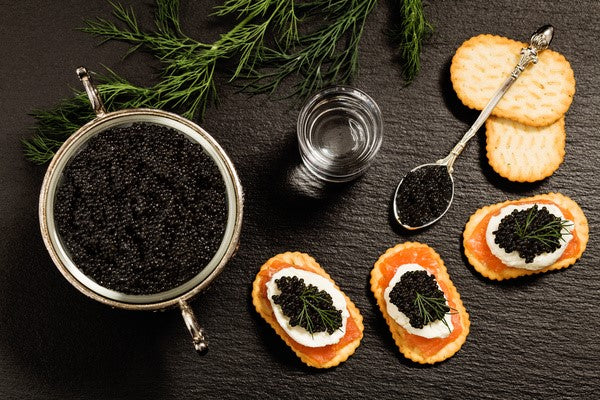Caviar is not just a symbol of luxury. It is a product with a rich history, delicate taste and high nutritional value. To truly enjoy its exquisite character, it is important to know many nuances, in particular, how to serve caviar. This article contains key recommendations for gourmets and anyone who wants to discover the world of delicacies with respect for traditions and tastes.
How to Properly Store Caviar
Fresh caviar requires careful handling. The main rule for storing it: a stable low temperature - from -2 ° C to + 2 ° C. The product must be in the original, hermetically sealed packaging. The shelf life is up to 3 months, but always follow the information from the manufacturer. After opening the package, the eggs quickly lose freshness, so it is better to eat it immediately.
Important! Never allow the temperature to drop below -4 ° C - this can change the texture of the delicacy and spoil its taste.
How to Serve Caviar
To fully reveal the taste, it is important to serve caviar correctly. First of all, you need to maintain the optimal temperature of the product. It is served chilled so that the subtle flavors are fully revealed. Ice is often used for this (as a base). Chilled dishes are also suitable. This type of serving helps to preserve the freshness and taste of the caviar longer.
You need to pay attention to the choice of spoon. It is important to avoid metal or silver utensils - they react with the product, distort and even spoil its taste. Ideal materials are mother-of-pearl, horn or gold. They are inert and preserve the purity of taste. In addition, such products will emphasize the sophistication of the moment.
A dish for serving caviar can be made of glass, porcelain, ceramics, crystal. For this, you can use a special caviar bowl. It not only looks elegant, but also helps to preserve the taste and texture of the product.
Best Food and Drink Pairings
Caviar is self-sufficient, but can be served with neutral-tasting products that do not drown out its aroma. Classic accompaniments:
- buckwheat pancakes or fritters;
- sour cream;
- buttered toast;
- baked potatoes or potato pancakes.
All these products create a soft texture and do not "drag" attention to themselves, leaving the delicacy the main role in the composition. Caviar in dishes can be used as an accent in warm appetizers. It is served, for example, with beef tartare, delicate mousses.
Drinks that emphasize its salty tenderness, but do not interrupt the taste, are suitable for the delicacy. These include champagne, dry white wine (for example, chardonnay), chilled high-quality vodka. It is important to choose non-flavored drinks with moderate acidity - they are best combined with the delicacy.
Useful Properties of Caviar
Caviar is not only a gastronomic pleasure, but also a real storehouse of benefits. It contains:
- vitamins — D, E, B12, niacin;
- minerals — iodine, sodium;
- protein — up to 35% (this makes the product an excellent source of amino acids);
- fat — about 15–16%, including valuable omega-3 fatty acids;
- lecithin.
Thanks to its rich composition, caviar helps restore strength, strengthen the immune system and improve brain function.
